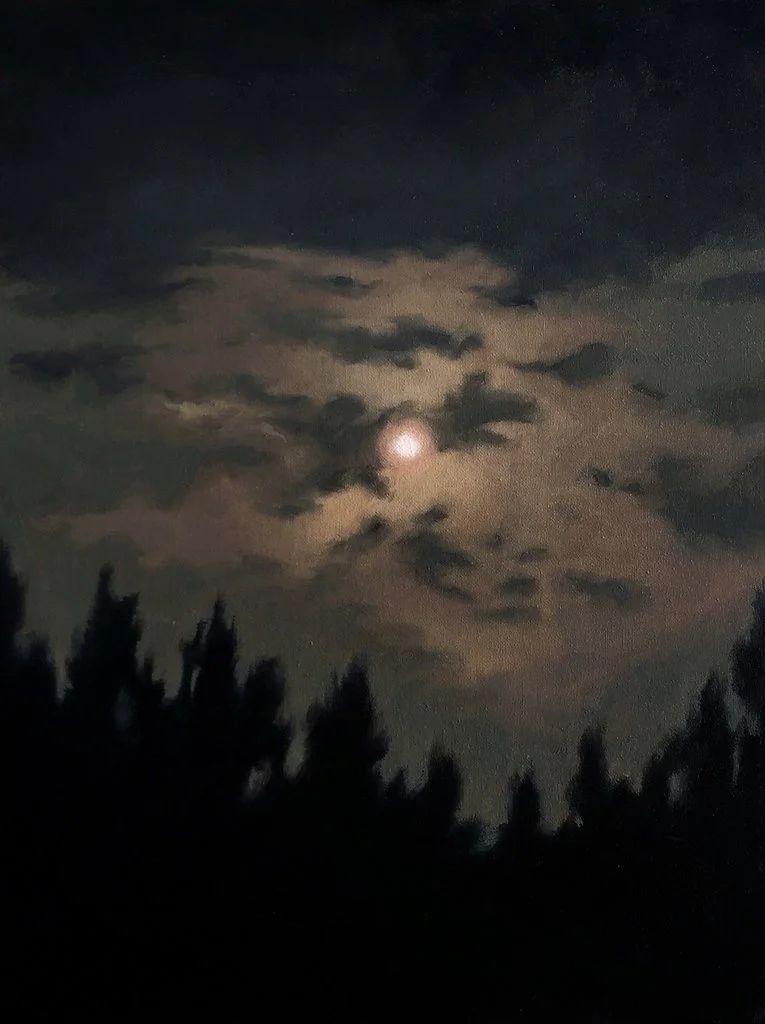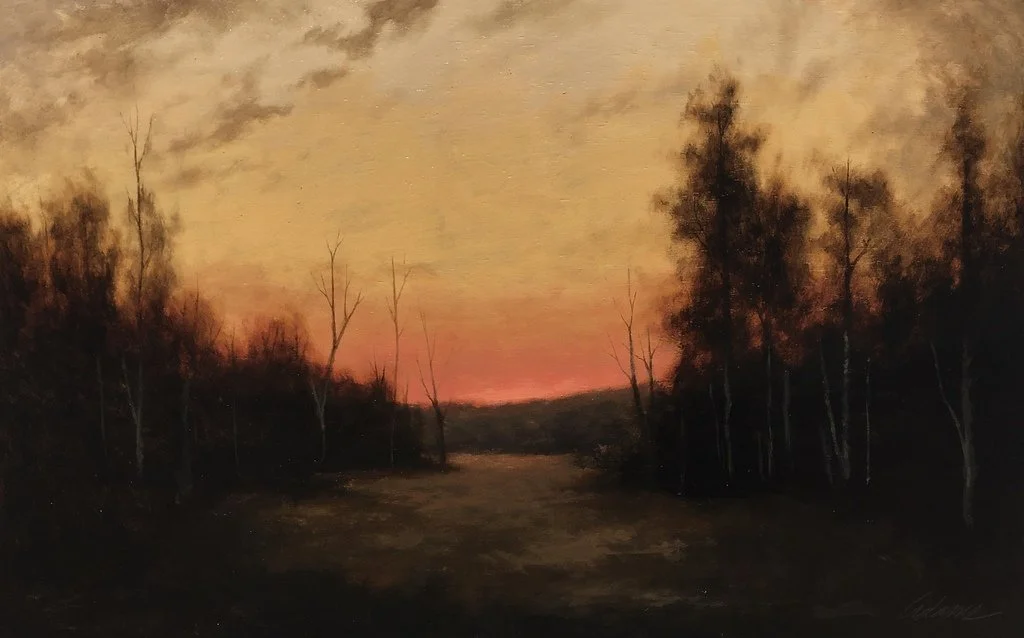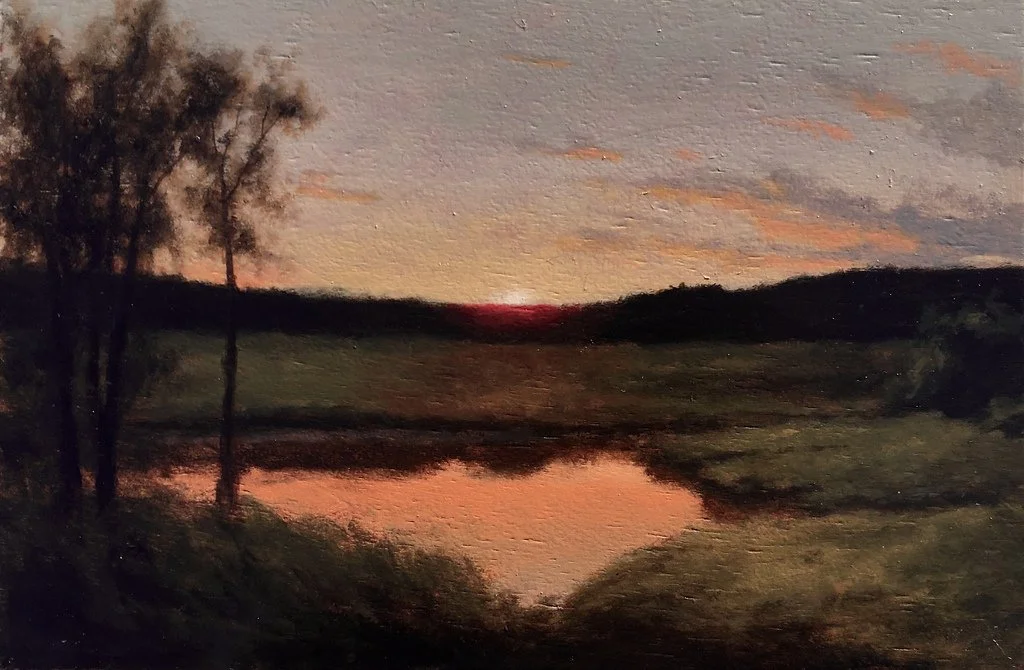Editor's Note
In the landscapes of Mike Adams, light does not simply reveal; it withholds, obscures, and meditates. His paintings from Studio operate within the hushed interval between Romanticism’s reverence for nature and a more modern, philosophical skepticism toward what we can truly know of the world. These are not landscapes in the traditional sense, but rather studies in atmosphere, time, and the precarious nature of perception. The viewer is invited not into a place, but into a threshold: between night and morning, reflection and opacity, being and fading.
Each canvas suggests a suspension of narrative. There is no arrival, no departure; only a lingering. Water mirrors sky, trees dissolve into dusk, clouds hover without urgency. In this way, Adams’s work recalls the phenomenology of perception: how our experience of the world is stitched not from objects, but from shifting constellations of light, shadow, and memory. The paintings do not describe nature; they enact its slow unraveling.
What endures in these images is not the scene itself, but the sensation of having seen; fleeting, mutable, already slipping into recollection. If there is melancholy here, it is not a mourning for what has been lost, but an acknowledgment that all seeing carries within it the seed of forgetting. In this, Adams’s landscapes are less about nature and more about the fragile architecture of our attention: how we look, how we remember, and how we learn, again and again, to let go.






